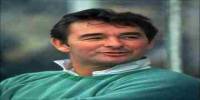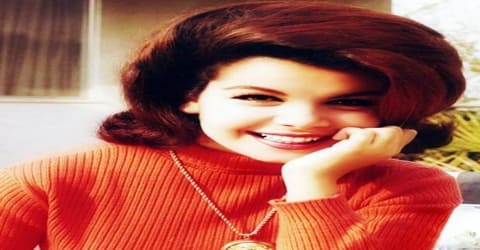Biography of Hans Bethe
Hans Bethe – German-American nuclear physicist.
Name: Hans Albrecht Bethe
Date of Birth: July 2, 1906
Place of Birth: Strasbourg, Germany
Date of Death: March 6, 2005 (aged 98)
Place of Death: Ithaca, New York, United States
Occupation: Physicist
Father: Albrecht Bethe
Mother: Anna (née Kuhn)
Spouse/Ex: Rose Ewald (m. 1939-2005)
Children: Henry Bethe, Monica Bethe
Early Life
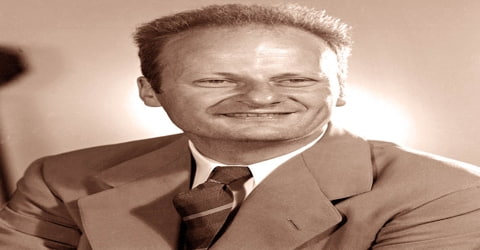
A German-born American theoretical physicist who helped shape quantum physics and increased the understanding of the atomic processes responsible for the properties of matter and of the forces governing the structures of atomic nuclei, Hans Bethe was born in Strasbourg, which was then part of Germany, on July 2, 1906, the only child of Anna (née Kuhn) and Albrecht Bethe, a Privatdozent of physiology at the University of Strasbourg. His scientific research helped to understand the atomic processes responsible for the properties of matter and of the forces regulating the structures of atomic nuclei. He played a substantial role in the development of the first atomic bomb during World War II, and later, in the early 1950s, the larger hydrogen bomb.
Bethe helped develop the discipline of quantum physics. During his 60+ year career, Bethe published over 300 scientific papers. For most of that career, he taught at Cornell University. In World War II, he helped the United States develop the atom bomb and then spent much of the rest of his life trying to halt nuclear proliferation. During his work with the Manhattan Project, he determined the critical mass of the bombs. As a scientist, he was best known for calculating and determining how stars produce light, and he even won a Nobel Prize for this achievement. He also advised Presidents from Truman to Clinton on scientific matters. Although he retired from teaching in 1975 he continued with his other pursuits practically until his death. As a lecturer, he had taught generations of physicists in many fields including particle, solid state, nuclear and astrophysics. He was calling for a complete ban on nuclear tests by the 1990s. He also continued writing scientific papers. Towards the end of his life, he was researching and writing about the deaths of stars.
Bethe received the Nobel Prize for Physics in 1967 for his work on the production of energy in stars. Moreover, he was a leader in emphasizing the social responsibility of science. His scientific research never ceased and he was publishing papers well into his nineties, making him one of the few scientists to have published at least one major paper in his field during every decade of his career which, in Bethe’s case, spanned nearly seventy years. Freeman Dyson, once one of his students, called him the “supreme problem-solver of the 20th century”.
Childhood, Family and Educational Life
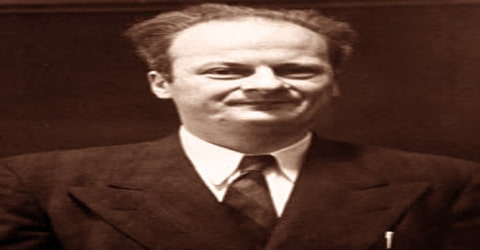
Hans Bethe, in full Hans Albrecht Bethe (German:ˈhans ˈalbʁɛçt ˈbeːtə), was born into a family of academicians on July 2, 1906, in Strasbourg, Alsace-Lorraine, an area France and Germany spent decades fighting over. At the time of Bethe’s birth, the city was part of Germany. Bethe’s father, a Protestant, was a physiologist at the University of Strasbourg and later taught in Frankfurt. His Jewish mother was also the child of a professor. Because the family was not religious, Bethe never considered himself Jewish.
In 1912, the family moved to Kiel after Albrecht Bethe accepted a position at the ‘University of Kiel’. Bethe was initially schooled privately by a professional teacher as part of a group of eight girls and boys. The family moved again three years later when Albrecht was named the head of the ‘Institute of Physiology’ at the ‘University of Frankfurt am Main’.
Bethe attended the Goethe-Gymnasium in Frankfurt, Germany. His education was interrupted in 1916 when he contracted tuberculosis, and he was sent to Bad Kreuznach to recuperate. By 1917, he had recovered sufficiently to attend the local Realschule, and the following year he was sent to the Odenwaldschule, a private, coeducational boarding school. He attended the Goethe-Gymnasium again for his final three years of secondary schooling, from 1922 to 1924. Bethe started attending the ‘University of Frankfurt’ in 1924. He originally majored in chemistry but became fascinated with physics after being taught by Walter Gerlach. Another mentor, Karl Meissner, advised Bethe to go to ‘University of Munich’ which had a better physics program. In 1926, Bethe entered the ‘University of Munich’ and began studying under Arnold Sommerfeld.
In 1928, Bethe earned a doctorate in physics by writing a thesis on electron diffraction in crystals. That same year, he worked with Erwin Madelung in Frankfurt. In 1930, he became a ‘Rockefeller Foundation’ fellow. As such, he studied with Ralph Fowler for a semester at ‘Cambridge University’, and he spent the next semester working with Enrico Fermi at the ‘University of Rome’.
Personal Life
Hans Bethe married Rose Ewald in 1939, daughter of German physicist Paul Ewald of Stuttgart, whom Bethe had worked under; and the couple had two children, Henry and Monica.
Bethe’s hobbies included a passion for stamp-collecting. He loved the outdoors, and was an enthusiastic hiker all his life, exploring the Alps and the Rockies. Bethe became a naturalized citizen of the United States in 1941. He later confided that he felt more at home in the U.S. than he ever had in Germany. He never used computers for his calculations. He did everything with a slide rule, pencil, and paper
Career and Works
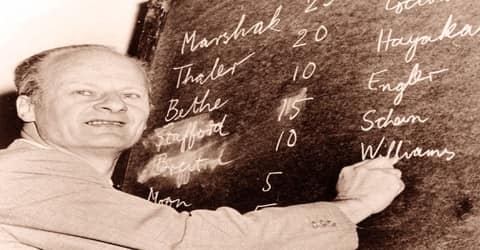
Hans Bethe’s craftsmanship was an amalgam of what he had learned from Sommerfeld and from Fermi, combining the best of both: the thoroughness and rigor of Sommerfeld and the clarity and simplicity of Fermi. This craftsmanship was displayed in full force in the many reviews that Bethe wrote. His two book-length reviews in the 1933 Handbuch der Physik the first with Sommerfeld on solid-state physics and the second on the quantum theory of one- and two-electron systems exhibited his remarkable powers of synthesis. Along with a review on nuclear physics in Reviews of Modern Physics (1936-37), these works were instant classics. All of Bethe’s reviews were syntheses of the fields under review, giving them coherence and unity while charting the paths to be taken in addressing new problems. They usually contained much new material that Bethe had worked out in their preparation.
In 1932, Bethe accepted an appointment as an assistant professor at the University of Tübingen, where Hans Geiger was the professor of experimental physics. One of the first laws passed by the new National Socialist government was the Law for the Restoration of the Professional Civil Service. After Hitler came to power in 1933, he was dismissed from his post because his mother was Jewish. He soon fled to Britain.
In 1933, the physics department at Cornell was looking for a new theoretical physicist, and Lloyd Smith strongly recommended Bethe. This was supported by Bragg, who was visiting Cornell at the time. In August 1934, Cornell offered Bethe a position as an acting assistant professor. Bethe had already accepted a fellowship for a year to work with Nevill Mott at the University of Bristol for a semester, but Cornell agreed to let him start in the spring of 1935. Before leaving for the United States, he visited the Niels Bohr Institute in Copenhagen in September 1934, where he proposed to Hilde Levi, who accepted. However, the match was opposed by Bethe’s mother, who did not want him marrying a Jewish girl, despite being Jewish herself, and Bethe broke off their engagement a few days before their wedding date in December. Niels Bohr and James Franck were so shocked by Bethe’s behavior that he was not invited to the Institute again until after World War II.
Bethe drew attention to himself shortly thereafter by publishing, with the help of various collaborators, three articles on thermo-nuclear reactions in the American Physical Society’s Reviews of Modern Physics. At the time, nuclear physics was a new field of study and these papers, which became known as “Bethe’s Bible,” served as the primary text on the subject for decades. One of Bethe’s most amazing discoveries came after a 1938 astrophysicists conference at the Carnegie Institution in Washington, D.C. There, the question was posed: What makes stars shine? Philosophers and astronomers had sought the answer for centuries. It took Bethe six weeks to end the mystery. Relying on his knowledge of nuclear reactions and fusion, Bethe churned out a stack of pencil and paper calculations and published them in a paper called “Energy Production in Stars.” In the paper, Bethe described the process by which the sun, and similar stars, merge hydrogen into helium, thus discharging energy that bursts forth as heat and light.
By stipulating and analyzing the nuclear reactions responsible for the phenomenon, he explained how stars could continue to burn for billions of years. His 1939 Physical Review paper on energy generation in stars created the field of nuclear astrophysics and led to his being awarded the Nobel Prize.
During World War II, Bethe aided the war effort by working on radar devices at MIT. Later, he was transferred to the Manhattan Project in Los Alamos. As the chief theoretical physicist, he helped develop the atomic bomb. He also helped found the scientific journal ‘Bulletin of the Atomic Scientists’. He had helped build the bomb because he feared what would happen if Hitler had nuclear weapons. He believed the atomic bomb was morally wrong and opposed the proliferation of nuclear weapons. During the ‘Korean War’, he helped work on the hydrogen bomb, despite initially opposing its development. As with the Germans during World War II, he had feared the possibility of the Communists developing the hydrogen bomb first.
In 1943 Bethe joined the Los Alamos Laboratory (now the Los Alamos National Laboratory) in New Mexico as the head of its theoretical division. He and the division were part of the Manhattan Project, and they made crucial contributions to the feasibility and design of the uranium and the plutonium atomic bombs. The years at Los Alamos changed his life. When Oppenheimer was put in charge of forming a secret weapons design laboratory, Los Alamos, he appointed Bethe director of the T (Theoretical) Division, the laboratory’s smallest but most prestigious division. This move irked the equally qualified but more difficult to manage Teller and Felix Bloch, who had coveted the job. A series of disagreements between Bethe and Teller between February and June 1944 over the relative priority of Super research led to Teller’s group being removed from T Division and placed directly under Oppenheimer. In September it became part of Fermi’s new F Division.
Bethe’s work at Los Alamos included calculating the critical mass and efficiency of uranium-235 and the multiplication of nuclear fission in an exploding atomic bomb. Along with Richard Feynman, he developed a formula for calculating the bomb’s explosive yield. After August 1944, when the laboratory was reorganized and reoriented to solve the problem of the implosion of the plutonium bomb, Bethe spent much of his time studying the hydrodynamic aspects of implosion, a job which he continued into 1944. In 1945, he worked on the neutron initiator, and later on radiation propagation from an exploding atomic bomb. The Trinity nuclear test validated the accuracy of T Division’s results. When it was detonated in the New Mexico desert on July 16, 1945, Bethe’s immediate concern was for its efficient operation, and not its moral implications. He is reported to have commented: “I am not a philosopher.”
Hans Bethe accepted J. Robert Oppenheimer’s invitation to become a part of the Manhattan Project, performing as director of the theoretical physics division. His wife had, however, strict reservations about Bethe’s job. His role was to define how the atomic bomb would function and what effects it would produce. Utilizing his vast knowledge of nuclear physics, electromagnetic theory, and shock waves, Bethe collaborated with Richard Feynman to work out a formula to calculate the efficiency of a nuclear weapon. He also made decisive contributions to the feasibility and design of the uranium and the plutonium atomic bombs.
At Los Alamos, Bethe directed teams of leading physicists in carrying out the complex calculations necessary to build the bomb. His team figured out how much plutonium would be needed and worked to figure out if such a detonation would ignite the earth’s atmosphere and destroy the planet. Team members began calling him “The Battleship” because of the way he destroyed potential problems by steaming right through to an answer. Though Bethe helped develop the A-bomb, he believed building it was morally wrong; however, he was eager to help defeat Nazism and figured if he did not help the United States develop the A-bomb, Germany would soon enough, making Hitler unstoppable. After the war, Bethe returned to academia and became a vocal critic of the nuclear arms race. He helped negotiate the first nuclear test ban treaty, which essentially banned all atmospheric tests. By the 1990s Bethe was calling for a total ban on nuclear tests.
Bethe helped negotiate the ‘Partial Test Ban Treaty’ of 1963. It prohibited atmospheric testing of nuclear weapons. After winning the Nobel Prize in 1967, he used some of the prize money to establish the ‘Aspen Center for Physics’. It is a non-profit that organizes conferences and workshops for research physicists. Bethe served on numerous advisory committees to the United States government, including the President’s Science Advisory Committee (PSAC). As a member of PSAC, he helped persuade President Dwight D. Eisenhower to commit the United States to ban atmospheric nuclear tests. (The Nuclear Test Ban Treaty, which banned atmospheric nuclear testing, was finally ratified in 1963.)
In 1972 Bethe’s cogent and persuasive arguments helped prevent the deployment of antiballistic missile systems. He was influential in opposing President Ronald Reagan’s Strategic Defense Initiative, arguing that a space-based laser defense system could be easily countered and that it would lead to further arms escalation. By virtue of these activities, and his general comportment, Bethe became the science community’s conscience. It was indicative of Bethe’s constant grappling with moral issues that in 1995 he urged fellow scientists to collectively take a “Hippocratic oath” not to work on designing new nuclear weapons.
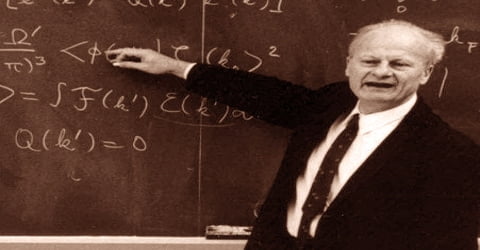
Bethe retired from teaching in 1975 but continued writing professional papers and near the end of his life was studying and writing about the collapse of stars. To the end, he never turned to computers for calculations, relying instead on a slide rule, pencil, and paper. In his free time, he enjoyed skiing, mountain climbing, and traveling, especially by train. He continued advising presidents, a service he began in the Harry Truman administration and carried on through President Bill Clinton. Most of all, Bethe was known for inspiring generations of Cornell physicists. Speaking to the Los Angeles Times, the late MIT physicist Philip Morrison, who worked at Los Alamos with Bethe, once said, “Of all the people who are so bright and accomplished, few are so sweet of temperament. He finds errors in such a way as you’re pleased to have the help.”
During the 1980s and 90s, Bethe encouraged using nuclear energy as a source of electricity. After the Chernobyl disaster of 1986, he served on a committee that analyzed its causes.
In 1995, at the age of 88, Bethe wrote an open letter calling on all scientists to “cease and desist” from working on any aspect of nuclear weapons development and manufacture. In 2004, he joined 47 other Nobel laureates in signing a letter endorsing John Kerry for President of the United States as someone who would “restore science to its appropriate place in government”.
Awards and Honor
In 1957, Hans Bethe was made a ‘Foreign Fellow of the Royal Society’ for his work in astrophysics. He became a Fellow of the American Academy of Arts and Sciences in 1947, and that year was received the National Academy of Sciences’ Henry Draper Medal. He was awarded the Max Planck Medal in 1955.
In 1967, Hans Bethe was awarded the Nobel Prize for his work on how stars produced energy and light.
Bethe also received the National Medal of Science in 1975, Oersted Medal in 1993, the Bruce Medal in 2001, and the Benjamin Franklin Medal for Distinguished Achievement in the Sciences by the American Philosophical Society posthumously in 2005. Bethe gave the 1993 Bakerian Lecture at the Royal Society on the Mechanism of Supernovae. In 1978 he was elected a Member of the German Academy of Sciences Leopoldina.
Death and Legacy
Hans Bethe died in his home in Ithaca, New York on March 6, 2005, of congestive heart failure. He was survived by his wife Rose and two children. At the time of his death, he was the John Wendell Anderson Professor of Physics, Emeritus at Cornell University.
‘Bethe’s Bible’ was three long papers written for the ‘Journal Reviews of Modern Physics’ in 1936-37. The ‘Bible’ was nearly 500 pages long and it was a comprehensive review of the state of nuclear physics at that time. They were republished as a book 50 years later. ‘Energy Production in Stars’ was published in ‘Physical Review’ in 1939. In this paper, Bethe described the process in which sun-like stars merge helium and hydrogen which produces energy that gives off vast amounts of light and heat.
Bethe helped elucidate the properties of neutrinos and explained the observed rate of neutrino emission by the Sun. With the American physicist Gerald Brown, he worked to understand why massive old stars can suddenly become supernovas.
Cornell named the third of five new residential colleges, each of which is named after a distinguished former member of the Cornell faculty, Hans Bethe House after him, as was the Hans Bethe Center, 322 4th St. NE, Washington, DC, home to the Council for a Livable World, where Bethe was a longtime board member, and the Bethe Center for Theoretical Physics at University of Bonn in Germany. He also has an asteroid, 30828 Bethe, that was discovered in 1990 named after him, as was the American Physical Society’s Hans Bethe Prize.
Information Source:


